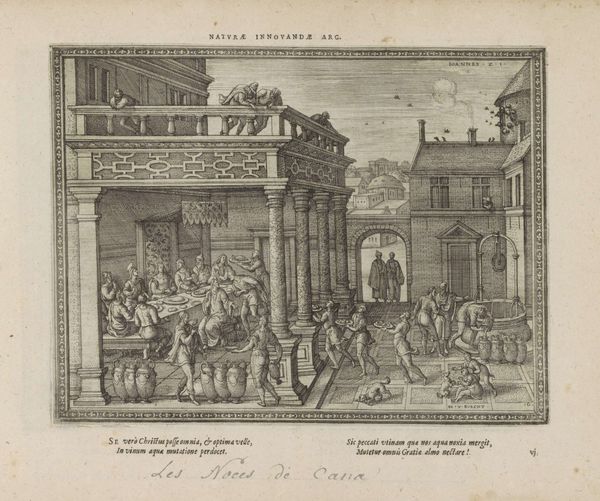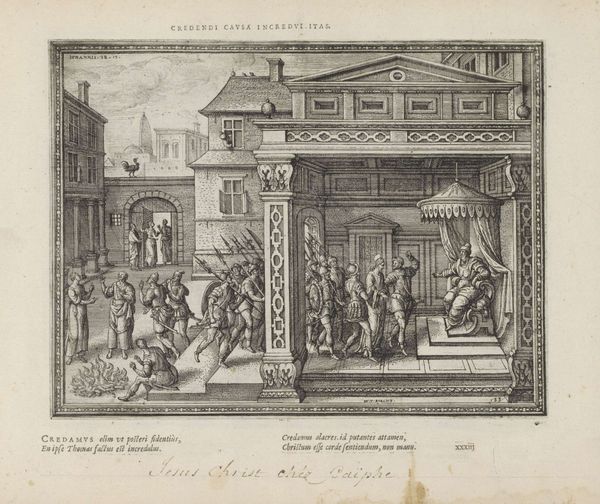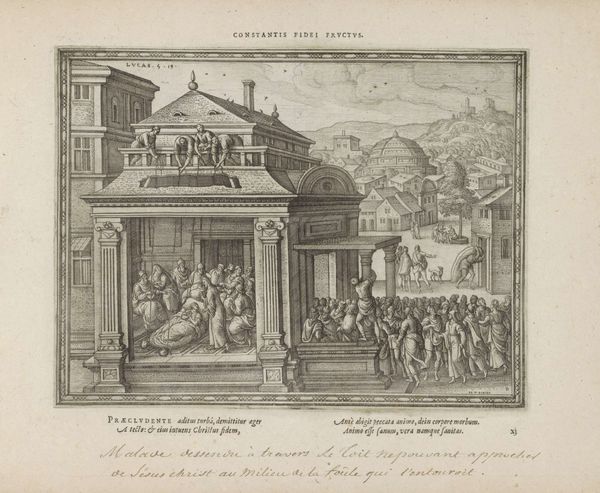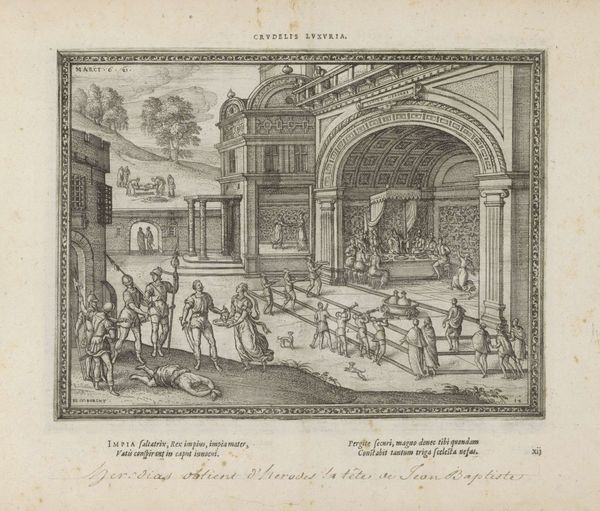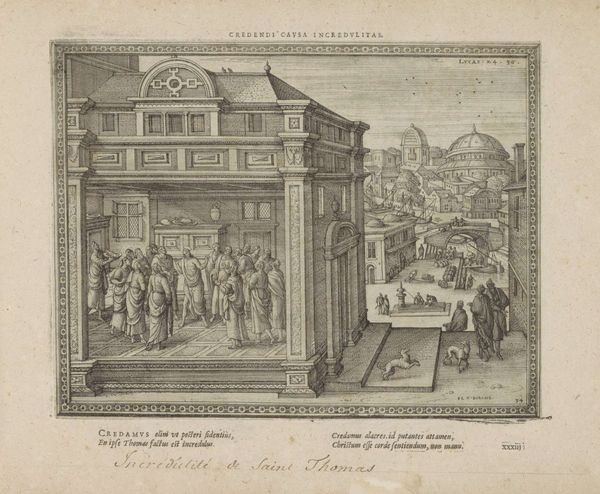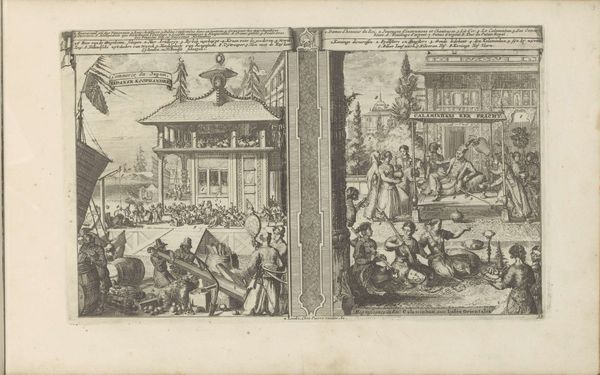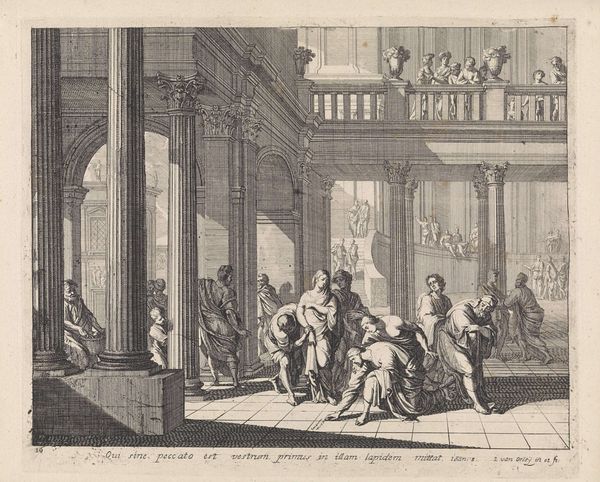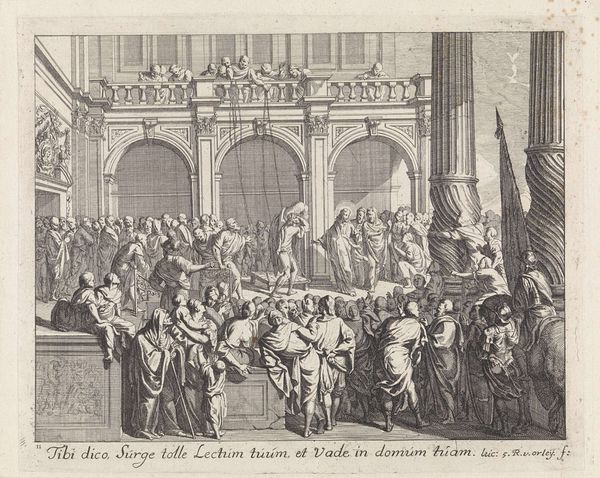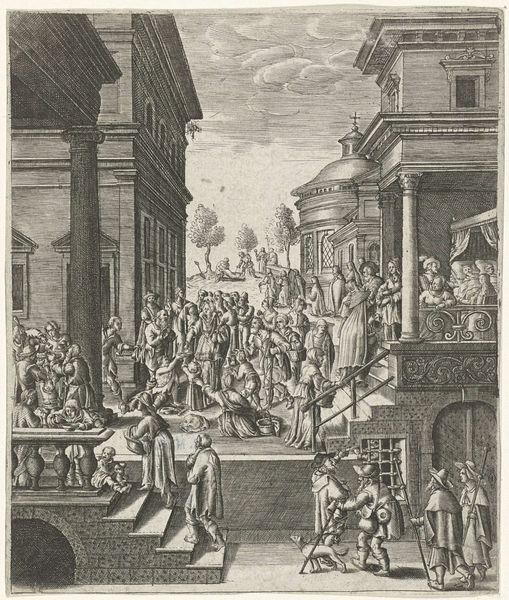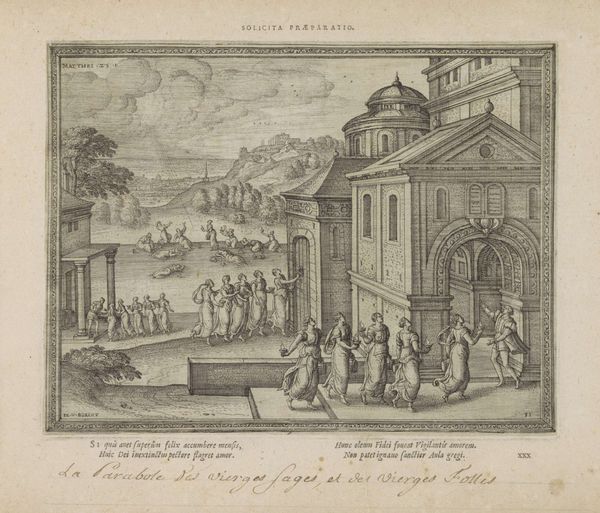
Koning Josia scheurt zijn kleren bij het horen van de woorden uit het wetboek 1582 - 1613
0:00
0:00
print, engraving
#
narrative-art
#
baroque
# print
#
11_renaissance
#
history-painting
#
engraving
Dimensions: height 188 mm, width 260 mm
Copyright: Rijks Museum: Open Domain
Editor: We’re looking at “Koning Josia scheurt zijn kleren bij het horen van de woorden uit het wetboek” or "King Josiah Tears His Clothes Upon Hearing the Words of the Law Book," a print made between 1582 and 1613 by Pieter van der Borcht. The detailed engraving depicts a scene of apparent distress, and there's a striking contrast between the ornate architecture and the raw emotion displayed. What do you see in this piece, especially considering its historical context? Curator: This work offers a lens through which we can explore power dynamics, religious reform, and the performance of grief in the late 16th century. Look at how Josiah is positioned under a canopy, receiving the law – an act of submission and authority. The tearing of clothes signifies repentance, but how might that be interpreted in the context of religious and political control at the time? Is it genuine sorrow or a carefully constructed performance of piety to maintain power? Editor: So you're saying that this image, seemingly about religious devotion, might actually be commenting on the political theater of the time? Curator: Exactly. Consider the Renaissance's engagement with classical antiquity and how it might have reshaped perceptions of leadership and religious authority. Does Josiah's action challenge or reinforce those perceptions? How does this narrative fit into larger reformation movements? What statements do the artist, Borcht, make on traditional political ideas? Editor: I see how connecting it to political theater and Renaissance values adds layers to it beyond just a Bible story illustration. It feels less like a straightforward depiction of faith and more like a commentary on how power and religion intertwined. Curator: Precisely! And these contextual details are crucial. What this piece brings to light for me is the complex interplay between individual faith, political obligation, and public presentation – themes that continue to resonate today. Editor: I’ll definitely remember that when I look at other historical pieces. There's more to it than meets the eye.
Comments
No comments
Be the first to comment and join the conversation on the ultimate creative platform.

